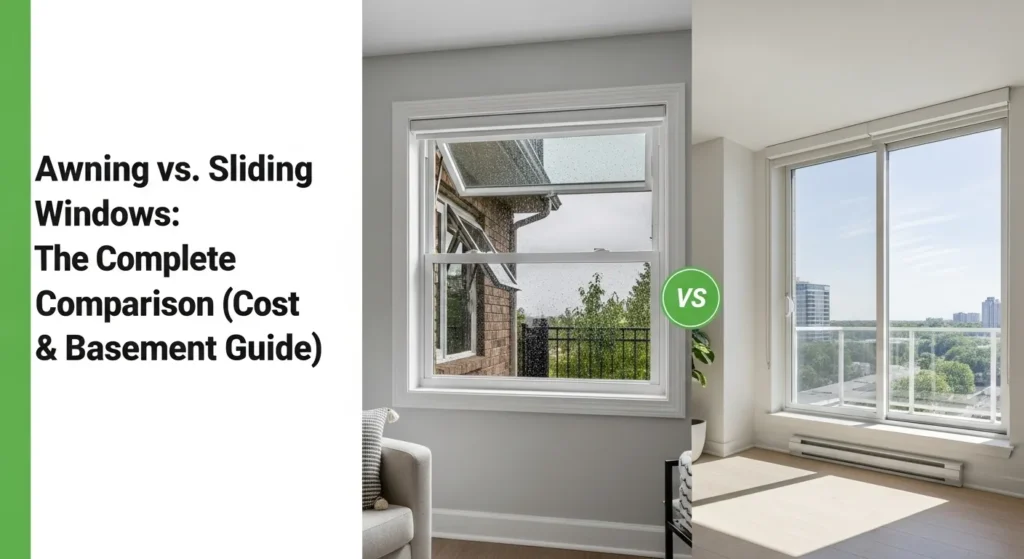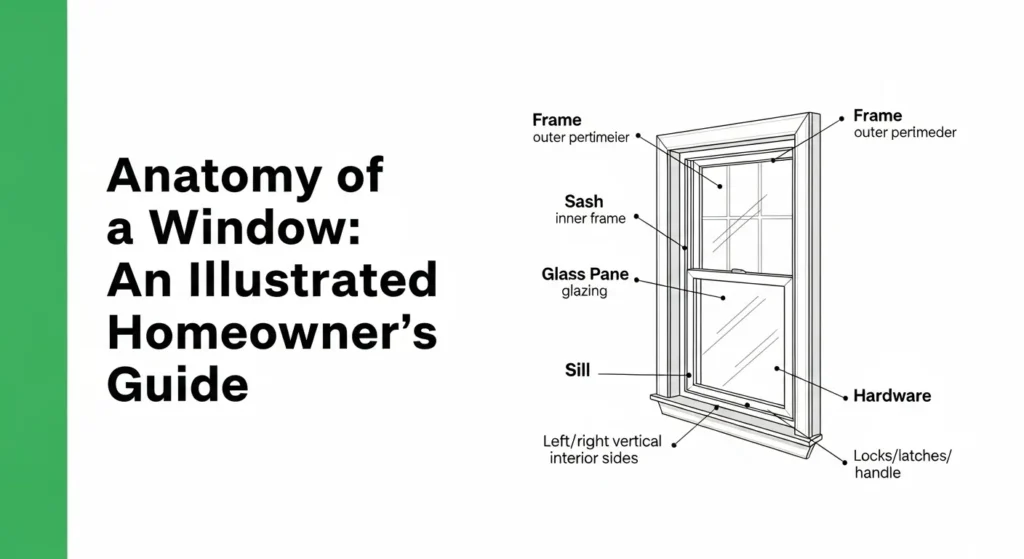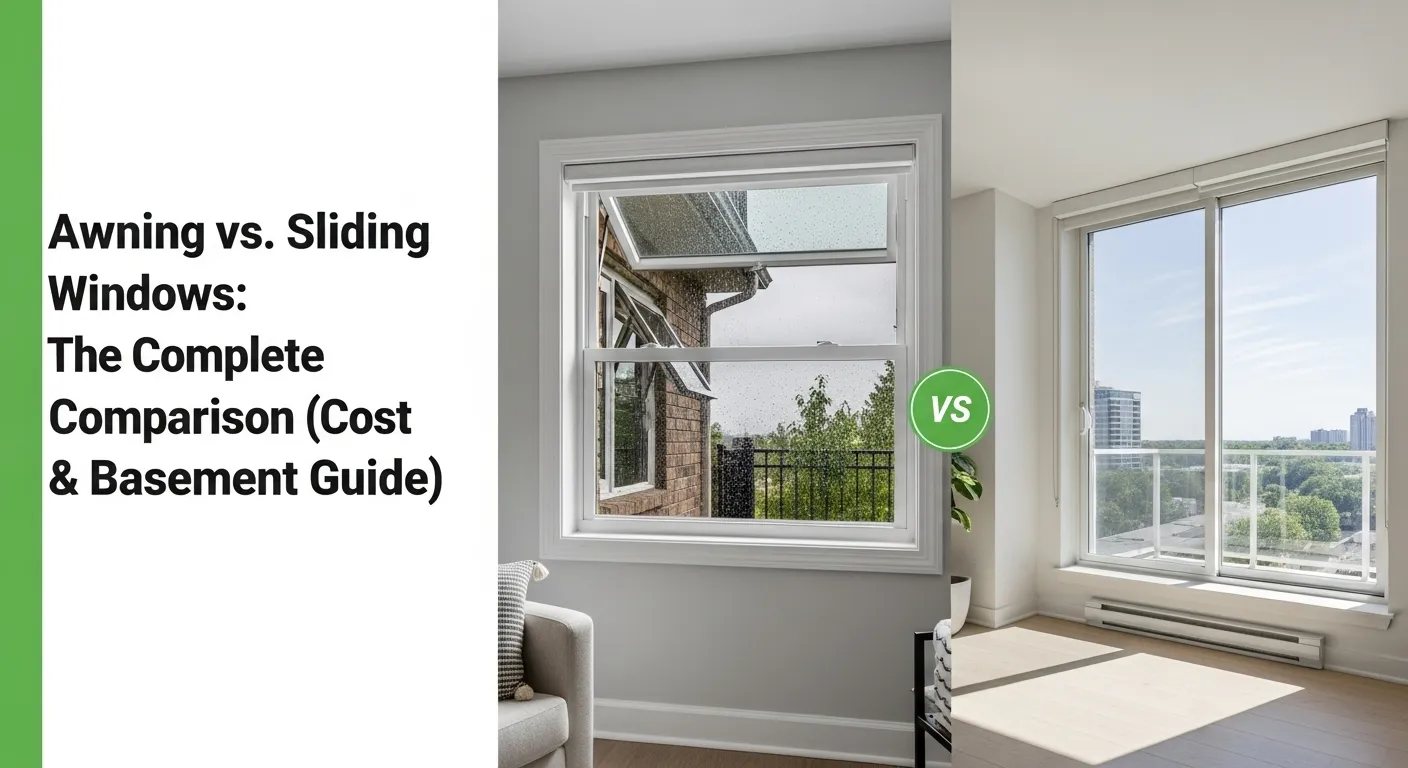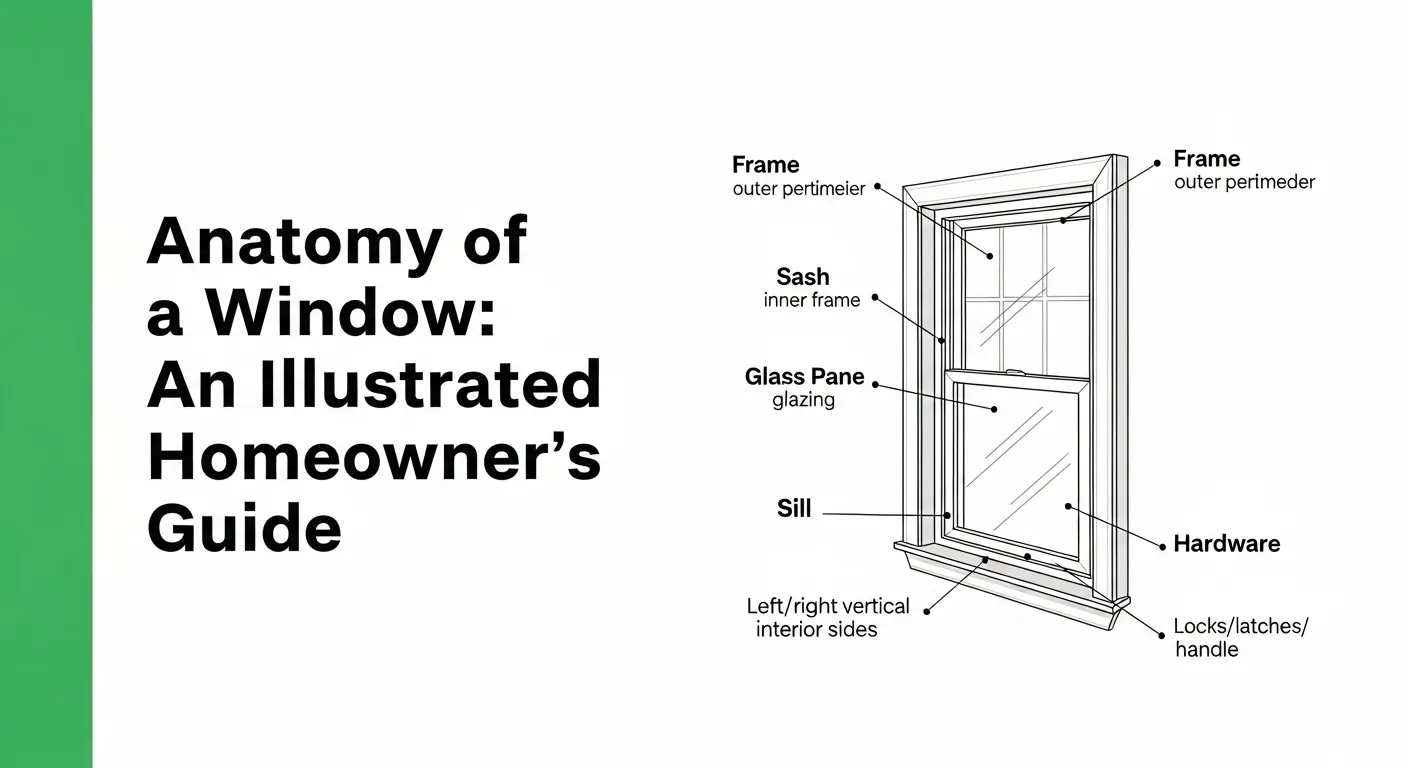Vinyl windows are low-maintenance, but still require some upkeep. A simple routine keeps them looking new, operating smoothly, and performing efficiently for decades.
You’re asking the right question. A predictable cleaning and maintenance plan is the secret to long‑term performance.
This owner’s‑manual guide gives you everything you need: a simple DIY cleaning recipe, a seasonal schedule, mechanical care, troubleshooting, and what to avoid.
What Is the Annual Maintenance Schedule for Vinyl Windows?
Do a deep clean and inspection twice a year, quick wipes monthly, and glass cleaning as needed.
The Annual Vinyl Window Maintenance Schedule
- Twice a Year (Spring & Fall)
- Deep clean frames, glass, tracks, and screens
- Inspect exterior caulk and interior/exterior weatherstripping
- Lubricate all moving parts (use 100% silicone spray)
- Clear weep/drainage holes in frames
- Once a Month
- Quick wipe of interior sills and tracks to prevent dust/grit buildup
- As Needed
- Clean glass to remove fingerprints or smudges
Pro tip: Set calendar reminders for spring and fall. Tie this to HVAC filter changes to build a home‑care cadence.
Part 1: How Do You Deep Clean Vinyl Windows (Step‑by‑Step)?
Use a gentle soap solution, soft tools, and a top‑to‑bottom workflow: frames → tracks → glass → screens.


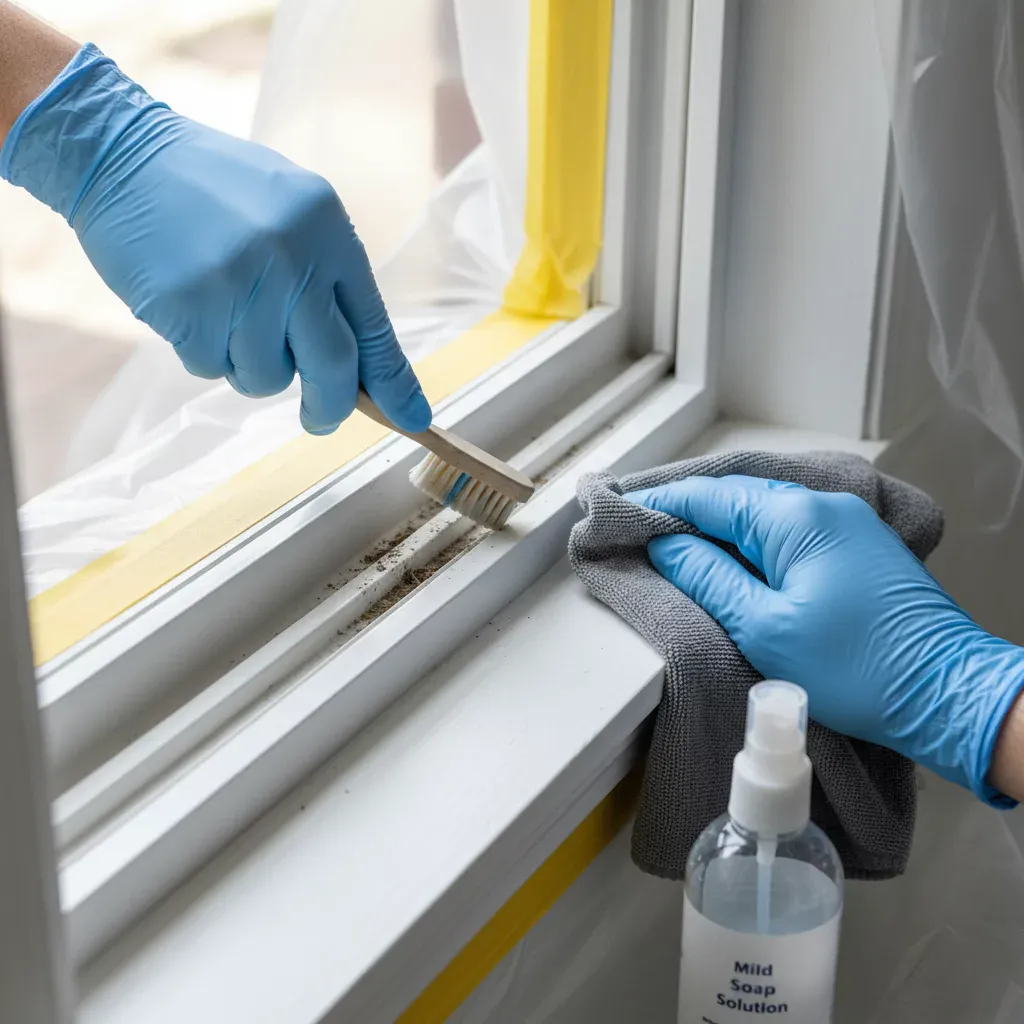

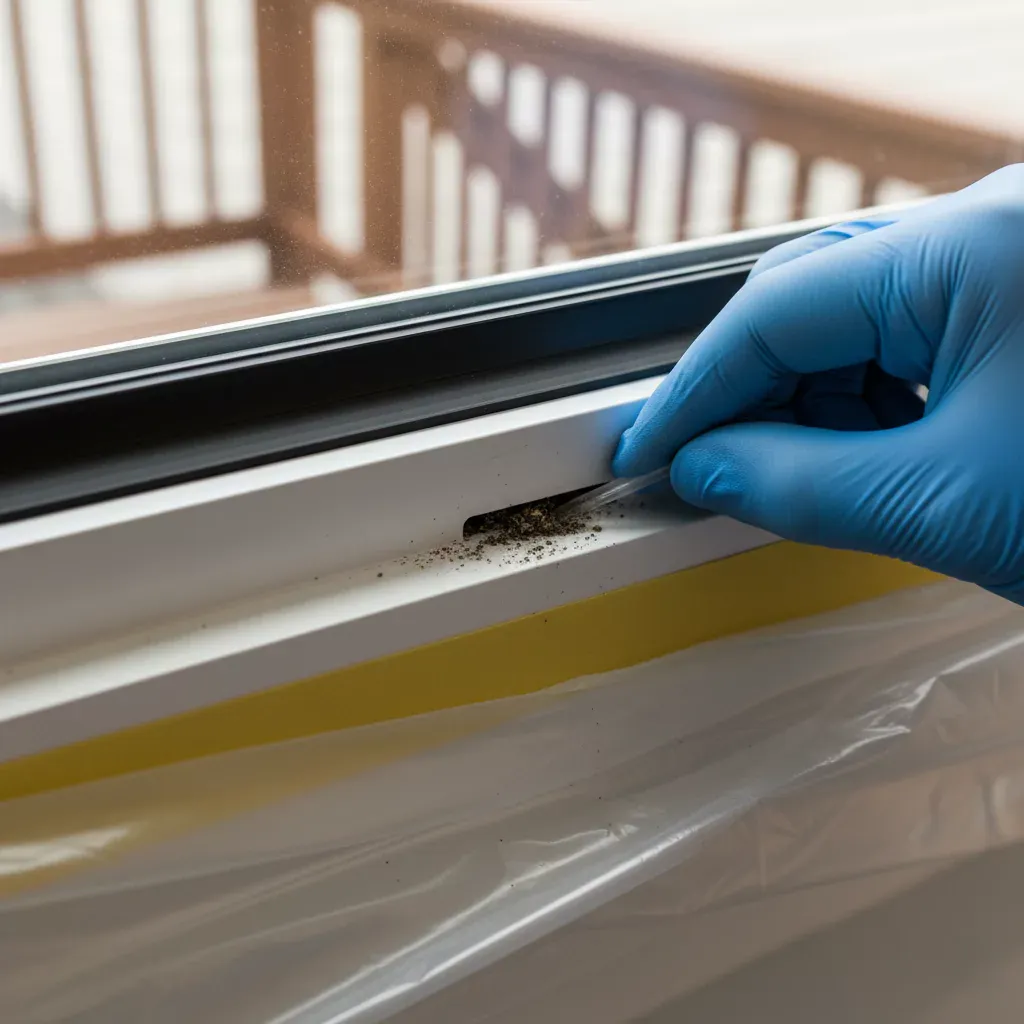
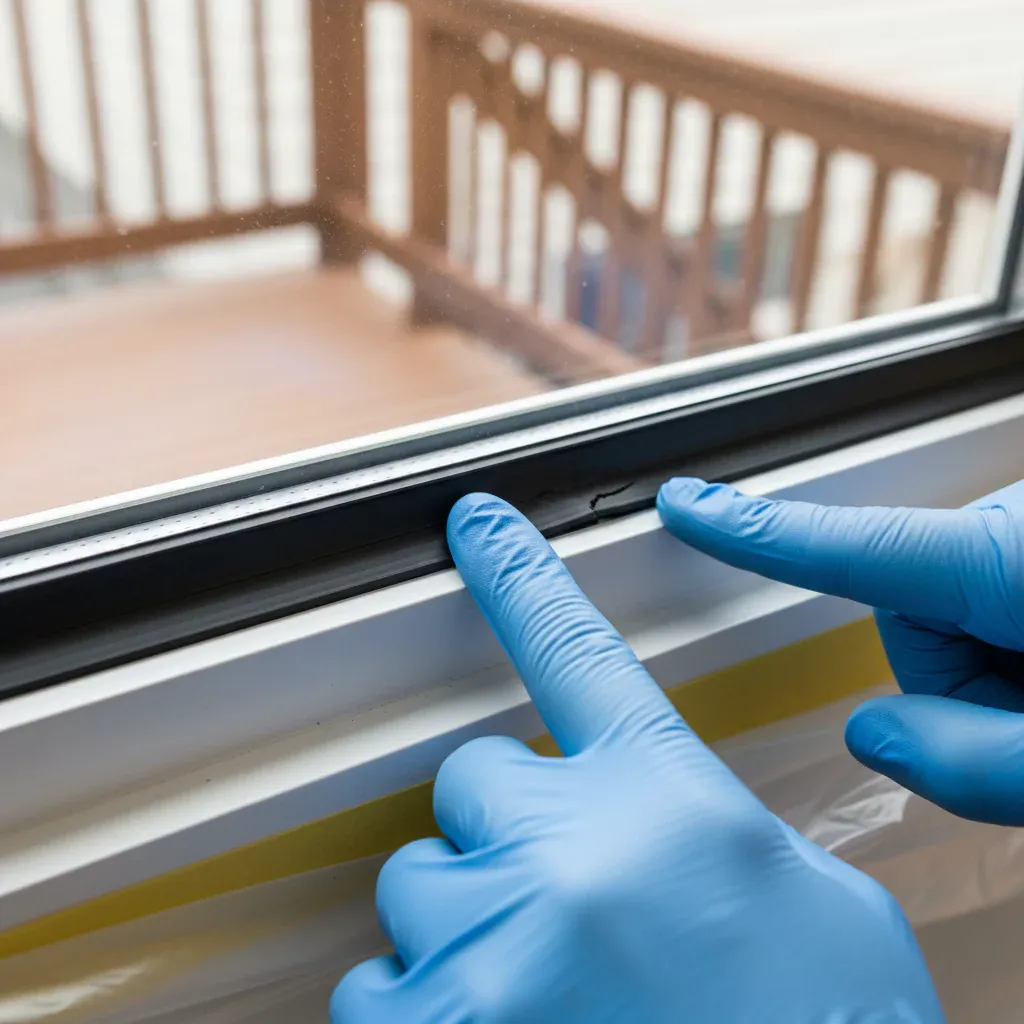
Gather Your Supplies
- For Cleaning
- Soft cloths or microfiber towels
- Soft bristle brush
- Bucket
- Gentle cleaning solution (recipe below)
- For Glass
- High‑quality squeegee
- Separate, clean microfiber cloths
- For Tracks
- Vacuum with crevice tool
- Toothbrush or grout brush
- Cotton swabs or plastic picks for corners/weep holes
What Is the Best DIY Cleaning Solution for Vinyl?
- Recipe: Mix 1 gallon of warm water with a few drops of mild dish soap.
- Why it works: Effective on dirt and light grease yet gentle on vinyl finishes and seals.
Step 1: Clean the Vinyl Frames and Sills
- Wipe with the soap solution using a microfiber cloth.
- Use the soft brush for stubborn spots and corners.
- Rinse with a clean, damp cloth; dry with a fresh towel.
Step 2: Detail the Window Tracks
- Vacuum out loose debris first.
- Scrub corners and grooves with a toothbrush and the soap solution.
- Wipe clean and dry thoroughly to prevent grit from binding rollers or balances.
Step 3: Wash the Glass Like a Pro (Streak‑Free)
- Work from top to bottom using a squeegee.
- Wipe the squeegee blade with a cloth after each pass.
- Finish edges and corners with a dry microfiber.
Step 4: Don’t Forget the Screens
- Gently remove screens.
- Wash with the same soap solution and a soft brush.
- Rinse using a hose on low pressure; allow to air dry fully before reinstalling.
Which Cleaner Should You Use on Vinyl Frames?
Choose the mildest cleaner that gets the job done; always rinse thoroughly.
| Cleaner | Best For | Pros | Cons |
|---|---|---|---|
| TSP Substitute | Heavy chalking & grime | Very effective degreaser | Requires thorough rinsing; avoid residue |
| 30/70 Vinegar/Water | Mildew & light dirt | Inexpensive, non‑toxic | Less effective on heavy grime |
| Specialized PVC Cleaner | All‑around use, tough spots | Formulated for vinyl; fast | More expensive |
Cleanliness test: After drying, wipe a white cloth across the frame. Any chalk or dirt = re‑clean that area.
Part 2: How Do You Maintain Mechanisms for Smooth Operation?
Lubricate moving parts with 100% silicone spray and inspect seals and caulk during seasonal cleanings.
The Most Overlooked Step: Lubricating Hardware
- What to use: 100% silicone spray lubricant (plastic‑safe, non‑staining).
- What to avoid: Oil‑based sprays and general “penetrants” (e.g., standard WD‑40) attract dust and can gum up tracks over time.
Where to apply (lightly; wipe excess):
- Sliding windows: A light spray along the tracks and contact points.
- Double‑hung windows: Balance channels, pivot bars, and tilt latches (avoid overspray on glass).
- Casement windows: Crank operator gears, arms, and hinge points.
- Locks and keepers: Light spritz on moving parts.
Pro tip: Place a paper towel shield behind target areas to catch overspray.
How Do You Check for Air and Water Leaks?
- Weatherstripping inspection
- Look for brittle, cracked, flattened, or missing seals.
- Close the window on a strip of paper; a loose pull indicates poor compression.
- Replace with like‑kind material (EPDM/foam/vinyl) sized to your profile.
- Exterior caulk inspection
- Examine the perimeter where the frame meets the siding or masonry.
- Look for cracks, gaps, or separation—especially at sills and corners.
- Reseal with high‑quality exterior sealant compatible with vinyl and substrate (e.g., 100% silicone or polyurethane per manufacturer guidance).
- Weep holes/drainage
- Locate weep slots at the bottom of exterior frames.
- Clear with a plastic pick or compressed air; flush with water to confirm flow.
Precision windows for every project—unlock lasting quality and seamless delivery.
Start Your Quote NowHow Do You Troubleshoot Common Vinyl Window Problems?
Most issues trace to dirt in tracks, lack of lube, worn seals, or blocked weeps. Identify the cause, then fix with the targeted step.
- Problem: Window is stuck or hard to open
- Solution: Deep-clean tracks and contact points; dry thoroughly; apply 100% silicone lubricant. Verify tracks aren’t bowed or obstructed.
- Problem: Draft when the window is closed
- Solution: Ensure locks fully engage to compress seals. Inspect/replace weatherstripping where worn. Recaulk exterior gaps.
- Problem: Condensation between glass panes
- Solution: Indicates a failed insulated glass unit (IGU) seal. The glass unit (not the whole window) likely needs replacement by a pro.
- Problem: Water pooling in the track after rain
- Solution: Clear weep holes; confirm the proper slope to the exterior. Inspect the exterior sealant for dams blocking drainage.
- Problem: Sash won’t stay up (double‑hung)
- Solution: Balance springs or shoes may be worn/detached. Inspect and replace the balance system as needed (often a DIY‑able part swap).
- Problem: Black spots or mildew on frames
- Solution: Clean with 30/70 vinegar/water. Improve room ventilation; avoid bleach on vinyl to prevent discoloration.
What Should You Avoid to Protect Vinyl Windows?
Skip harsh chemicals, abrasive tools, and high pressure—these cause the most permanent damage.
- Harsh chemicals
- Avoid bleach, ammonia, solvent cleaners (acetone, lacquer thinner), and liquid grease removers—they can yellow, craze, or embrittle vinyl.
- Abrasive tools
- No steel wool, abrasive pads, or razor scrapers on frames; they scratch and dull the finish.
- Pressure washers
- High pressure can force water past seals into frames and walls. Hand wash only.
Safety note: Always spot‑test any new cleaner on an inconspicuous area.
Conclusion
The key takeaway:A simple, twice‑yearly routine—clean, lubricate, and inspect—preserves appearance, smooth operation, and energy efficiency for the long run.
Benefits you’ll feel: easier operation, fewer drafts, clearer views, and fewer costly repairs.
Have a window problem not listed here? Ask our experts in the comments below!
- Painting: Can You Paint upvc Windows?
- Painting: How to Prepare Vinyl Windows for Painting
- Cleaning and Maintaining: Cleaning and Maintaining upvc Windows
- Cleaning and Maintaining: How to Clean Oxidized or Yellowing pvc Window Frames
- Repairs: Replacing Window Glass & Parts
- Install: How to Install J‑Channel and Trim Around Windows with Vinyl Siding
- Cost analysis: The Average Cost to Install Vinyl Windows
- Install: Installing Vinyl Windows in a Brick House

